
Why a poem outraged 1980s Britain
 Emmanuel Lafont(Credit: Emmanuel Lafont)
Emmanuel Lafont(Credit: Emmanuel Lafont)Forty years ago, Northern English poet Harrison published a powerful work inspired by vandalised gravestones in his hometown Leeds. Then, when it was screened on TV in 1987, a national furore erupted.
"FOUR LETTER TV POEM FURY" thundered the front page of one British newspaper, condemning the "cascade of expletives". "FROM BAD TO VERSE" was the headline of another article, that quoted a Conservative Member of Parliament questioning whether the said poem "serves any artistic purpose whatsoever". And a group of particularly exercised MPs called for a debate in the House of Commons.
The furore was about a poem called V by northern English poet Tony Harrison – a work inspired by vandalised gravestones in his hometown Leeds – which was originally published in January 1985, but really became a cause célèbre when it was screened on national television in the UK two years later, in November 1987.
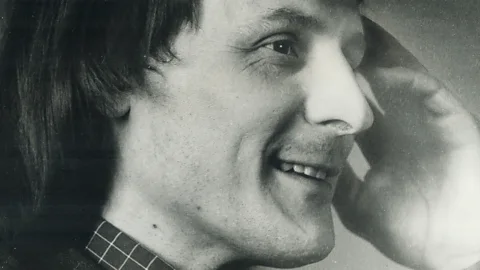 Getty ImagesTony Harrison has long been one of Britain's most respected contemporary poets (Credit: Getty Images)
Getty ImagesTony Harrison has long been one of Britain's most respected contemporary poets (Credit: Getty Images)It is not often a poem becomes a hot topic of conversation among the general public. The last time it happened was four years ago when Amanda Gorman read her poem The Hill We Climb at Joe Biden's presidential inauguration, although the poet's youth and outfit excited as much comment as her verse. Before that, it was WH Auden's Funeral Blues, after it featured in the hit 1994 romcom Four Weddings and a Funeral.
But if it is unusual for a poem to escape the confines of the world of literature, it's virtually unheard of for one to provoke angry newspaper headlines, and prompt politicians to demand action and members of the public to furiously call TV channels.
How it came aboutV had its origins in a visit by Harrison to Holbeck Cemetery in Beeston, Leeds, in May 1984. The cemetery stands on a hill – beneath which there are worked-out mine seams – and overlooks both Elland Road, home of Leeds United Football Club, and the University of Leeds, where Harrison, a poet and playwright, had studied Classics and Linguistics. Harrison, there to tend his parents' graves, found the cemetery strewn with beer cans and gravestones defaced by spray-painted graffiti – four-letter words, racist abuse, swastikas and a series of "V" letters. The nature of some of the graffiti suggested football fans were responsible.
At this time, unemployment was soaring, and went on to reach 11.9% later that year, a level not seen in the UK since 1971 – and not seen since. The previous year, an award-winning BBC drama, The Boys from the Blackstuff, about unemployed tarmac-layers in Liverpool, had captured the zeitgeist and made a huge impact. The Miners' Strike had started some weeks earlier. In fact, the country was deeply divided under a polarising Conservative government led by Margaret Thatcher. In the vandalism and the spray-painted daubings, Harrison saw further evidence of societal division, and it gave him the idea for his poem.
Its power and endurance come from its energy, the impetus of the verse and the language, its anger, and its use of the personal in the service of the political – Sandie ByrneHarrison was, at this point, an established and well-respected poet, playwright and translator. He had published several volumes of verse and been the resident dramatist at the National Theatre, while his 1973 translation of Molière's The Misanthrope had won great acclaim.
On 24 January 1985, V was published in the London Review of Books.
It consists of 112 four-line stanzas, or quatrains, with an ABAB rhyming scheme, the same form as Thomas Gray's celebrated 18th-Century poem Elegy Written in a Country Churchyard, which Harrison sought to evoke in contrast with his own work.
The "V" of the title stands for "versus" – which is also a pun on "verses" – but maybe also for "victory", and perhaps it is further intended to refer to the two-fingered "V sign" gesture considered rude in British culture.
One verse reads:
These Vs are all the versuses of life
from LEEDS v. DERBY, Black/White
and (as I've known to my cost) man v. wife,
Communist v. Fascist, Left v. Right.
The poem imagines the poet engaging in a dialogue with the person who has defaced the graves, and it features the obscenities and racist epithets used in the graffiti.
"We didn't need Harrison to tell us then that Britain was divided, and we don't now, but V was a powerful articulation of those divisions and some of their causes," says Sandie Byrne, Professor of English at the University of Oxford.
"The football supporter who, taking a shortcut through the cemetery, takes out his rage on the gravestones, is treated sympathetically, albeit with aggressive language to match his own. The Harrison figure understands the frustration of the third-generation unemployed among headstones celebrating lifelong professions.
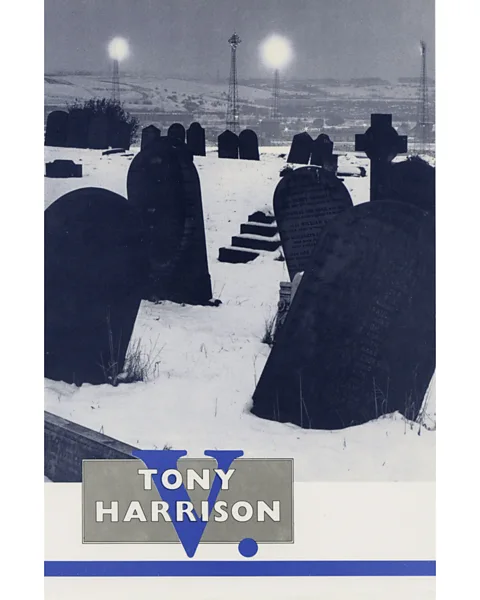 Bloodaxe Books/ Graham SykesThe cover of the original 1985 edition of V features a cover photograph of Beeston cemetery – the inspiration for the poem (Credit: Bloodaxe Books/ Graham Sykes)
Bloodaxe Books/ Graham SykesThe cover of the original 1985 edition of V features a cover photograph of Beeston cemetery – the inspiration for the poem (Credit: Bloodaxe Books/ Graham Sykes)"The poem's power and endurance come from its energy, the impetus of the verse and the language, its anger, and its use of the personal in the service of the political."
V did not appear to cause any outrage when first printed in the London Review of Books. It was subsequently published in book form by Bloodaxe Books in November 1985 and, again, troubled neither the UK's legislature nor its newspapers. Neil Astley, founder of Bloodaxe Books, and still the publisher's editor and managing director, recalls that, soon after the publication of the poem as a book, Harrison performed the entire thing in a late-night arts slot on Tyne Tees Television, which catered specifically to audiences in North East England, and "it went out without arousing any opposition as far as I'm aware".
The moment of impactBut then in 1987, it became known that a televised version of the poem had been made for national broadcaster Channel 4, directed by celebrated theatre director Richard Eyre and featuring Harrison reading the poem along with footage of, among other things, striking miners, Holbeck Cemetery and Thatcher doing a "victory" sign. At that point, all hell broke loose.
In October, a few weeks before its broadcast, the Daily Mail reported on the "FOUR LETTER TV POEM FURY" on its front page. The activist and anti-obscenity campaigner Mary Whitehouse called the poem a "work of singular nastiness". Conservative MP Sir Gerald Howarth, who earlier that year had attempted to introduce legislation that would make it a crime to air material that might cause "gross offence" to a "reasonable person", was another who opposed its broadcast. He officially called for a debate in the House of Commons to try to stop it. One hundred and twenty one MPs signed the proposal. Howarth later admitted he had not read the poem in full. Harrison recalled in the 2013 BBC Radio 4 documentary, Exploring V, that at the height of the furore, a reporter from the Telegraph knocked on his door. "I said, 'Have you read the poem?'’ He said,'No. I'm New'."
The irony is that while [publisher] Bloodaxe had sold a couple of thousand copies of the poem before 1987, as a result of the attacks on the Channel 4 film, it reached an audience of millions – Neil AstleyOpposition to the TV programme came principally from right wing commentators but the Sunday Telegraph columnist and editor of the Literary Review, Auberon Waugh, whom no-one had ever mistaken for a left winger, found the poem "well written and extremely moving", as he wrote in his Telegraph column at the time. Ian Hislop, the editor of UK satirical magazine Private Eye, wrote an article defending it in The Listener, as did Bernard Levin in the Times, calling it "powerful, profound and haunting". And the Independent printed the whole poem in its news pages, with an introduction by Blake Morrison in which he wrote: "Those MPs are right to believe that the poem is shocking but not because of its language. It shocks because it describes unflinchingly what is meant by a divided society, because it takes the abstractions we have learned to live with – unemployment, racial tension, inequality, deprivation – and gives them a kind of physical existence on the page."
The film was broadcast at 11pm on Channel 4 on Wednesday 4 November 1987. According to the logs of the Channel 4 staff on the switchboard – which were reproduced in the appendix of Bloodaxe's second edition of the poem, along with many of the newspaper and magazine articles about the furore – there were several calls from viewers irate at the "disgusting language". But others approved. Mr K of Watford suggested "politicians should address their energies into the social problems featured in the poem". Mr W of London said: "I am so moved the tears are running down my cheeks". The majority of calls were in favour of the broadcast.
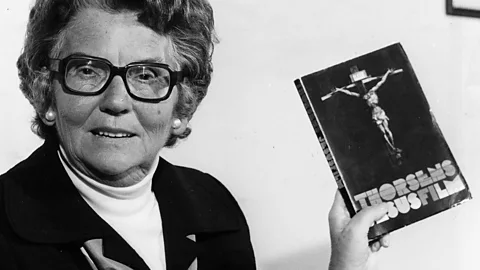 Getty ImagesAnti-obscenity campaigner Mary Whitehouse was among the poem's most high-profile critics (Credit: Getty Images)
Getty ImagesAnti-obscenity campaigner Mary Whitehouse was among the poem's most high-profile critics (Credit: Getty Images)"The irony is, of course, that while Bloodaxe had sold a couple of thousand copies of the poem before 1987, as a result of the attacks on the Channel 4 film, V reached an audience of millions who might otherwise never have heard of it," Astley tells the BBC. "And if you read the poem today, it feels every bit as vital and relevant as it was 40 years ago."
Sandie Byrne says: "I remember friends reading about the poem in the press, and assuming that it was just a meretricious piece studded with swear words by a shock jock seeking attention. Others picked up that it mentioned [miners' leader] Arthur Scargill, and showed scenes of the miners' strike, and assumed that those were its only subjects. Even among those who actually read it, the poem seemed to revive ideas about appropriateness in poetic diction that one would have thought long dead.
More like this:
• The 'obscene' book that became a bestseller
• Why did Jane Austen's sister burn her letters?
• 40 of the most exciting books to read in 2025
"What was unexpected and possibly shocking about V," Byrne tells the BBC, "was less the dialogue that represented a young football supporter swearing – what a surprise – and more the use of iambic pentameter quatrains, at a time when closely patterned, regular verse was regarded as outmoded, an unfitting vehicle for modern concerns. The transplantation of Gray's elegy from a small country churchyard to a large urban cemetery, the use of ellipses, slang, ordinary speech and Northern pronunciation perhaps suggested that poetry wasn't a sleepy dusty backwater, or necessarily couched in prissy, posh Southern or elaborate language."
The poem was once again broadcast in its entirety on Radio 4 in 2013. Although the press anticipated controversy, there was actually little fuss. Perhaps listeners had become more used to four-letter words being used in all sorts of media. The racist epithets would have if anything, been considered even more offensive in 2013 than when the Channel 4 film was broadcast. The half-hour Radio 4 documentary that was aired before the reading of the poem that contextualised the swear words and slurs must have helped listeners understand their use in the work.
Both poet and poem are now an accepted part of the literary canon. The website of the Poetry Foundation, a well-respected US organisation set up to promote poetry, describes Harrison as "Britain's leading poet-playwright", and says that V remains his "most famous poem". But while V's power to shock may have been somewhat diminished, it has lost none of its ability to engage and move the reader.
The full text of Tony Harrison’s V can be read on the London Review of Books website. Warning: it contains swear words and highly offensive racial slurs
--
If you liked this story, sign up for The Essential List newsletter – a handpicked selection of features, videos and can't-miss news, delivered to your inbox twice a week.
For more Culture stories from the BBC, follow us on Facebook, X and Instagram.
PoetryHistoryBritish literatureFeaturesWatch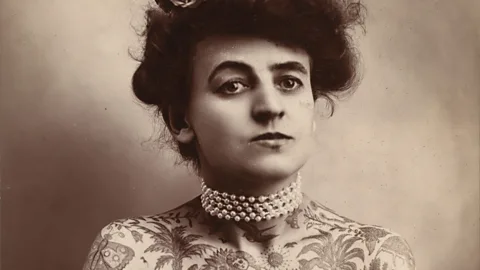 Why we're still talking about Maud Wagner
Why we're still talking about Maud WagnerHow America's first professional female tattooist broke through into an art form historically dominated by men.
3 days agoHistory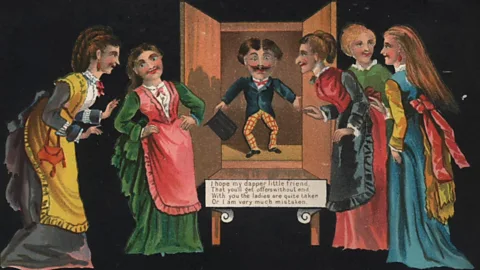 The insulting 'Vinegar Valentine' of Victorian England
The insulting 'Vinegar Valentine' of Victorian EnglandValentine’s Day is thought to celebrate romance but rude cards soured the holiday for its recipients.
14 Feb 2025History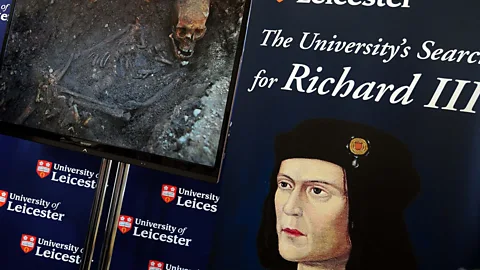 Richard III: The 'accidental' photo of a long-lost king
Richard III: The 'accidental' photo of a long-lost kingWhy a famous photograph of King Richard III's skeleton was a happy 'accident'.
11 Feb 2025History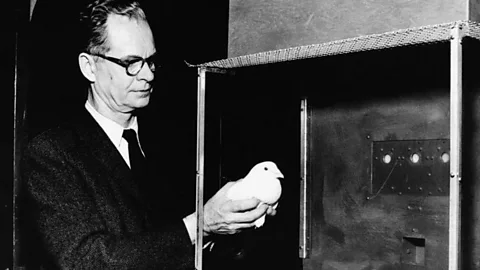 The WW2 experiment to make pigeon-guided missiles
The WW2 experiment to make pigeon-guided missilesAn unexpected WW2 experiment by behaviourist B F Skinner proved that pigeons could be used for missile guidance.
4 Feb 2025History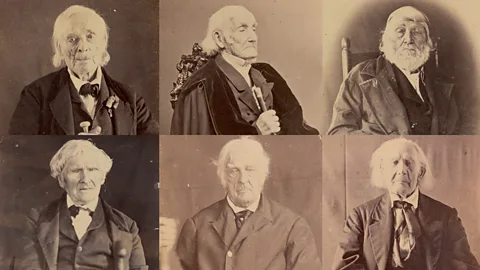 America's last Revolutionaries: Rare photos of US patriots
America's last Revolutionaries: Rare photos of US patriotsHow a dwindling group of veterans from the American War of Independence were featured in early photographic form.
7 Jan 2025History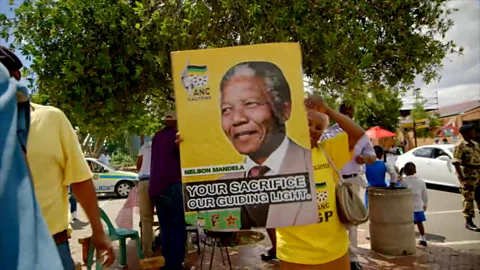 Idris Elba on moment he learned about Mandela's death
Idris Elba on moment he learned about Mandela's deathThe actor recalls being at the Mandela film premiere when he heard the anti-apartheid politician had died.
7 Dec 2024History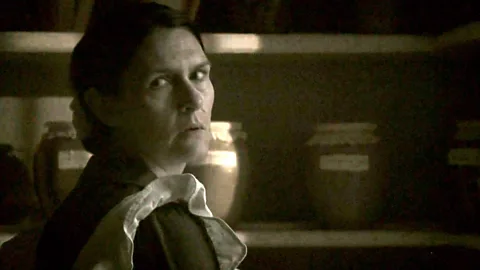 Mary Mallon: 'The most dangerous woman in America'
Mary Mallon: 'The most dangerous woman in America'How Mary Mallon, an Irish cook for New York's elite, became known as the 'most dangerous woman in America'.
17 Nov 2024History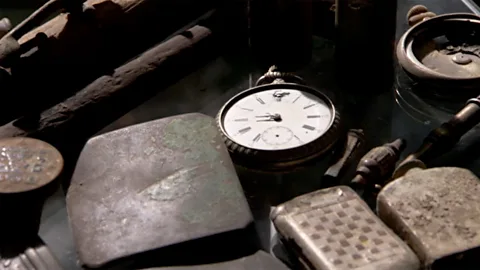 World War One relics live on in the fields of Europe
World War One relics live on in the fields of EuropeThe battlegrounds of World War One are still giving up their revealing evidence of bitter fighting.
12 Nov 2024History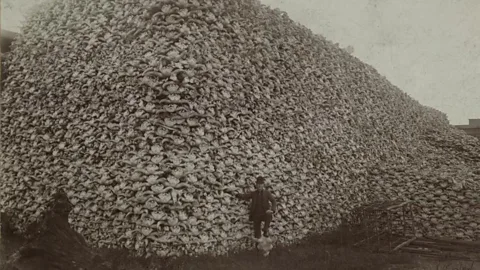 The picture that tells a lesser-known chapter of US history
The picture that tells a lesser-known chapter of US historyHow a 1892 photo from Rougeville, Michigan, became the most iconic image of the bison massacre in America.
22 Oct 2024History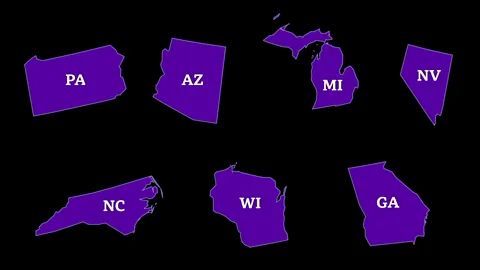 The history of swing states in the US
The history of swing states in the USThe US Presidential elections did not always depend on just these seven states.
21 Oct 2024History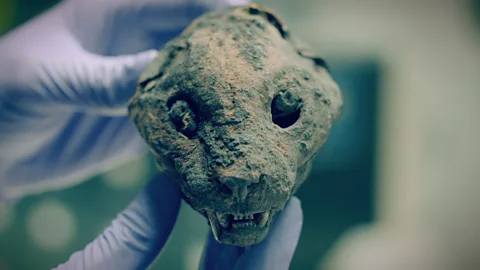 Why tonnes of mummified cats ended up in England
Why tonnes of mummified cats ended up in EnglandIn 1890 an estimated cargo of 180,000 ancient felines, weighing 19.5 tonnes, were auctioned off in Liverpool.
18 Sep 2024History Inside the ancient royal tomb found by accident
Inside the ancient royal tomb found by accidentThe Thracian Tomb of Kazanlak was accidentally discovered by Bulgarian soldiers digging up shelters in 1944.
11 Sep 2024Archaeology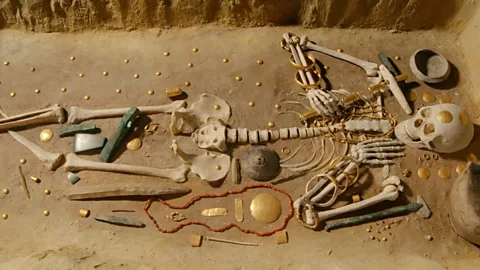 Varna Necropolis: World's oldest gold treasure
Varna Necropolis: World's oldest gold treasureThe Varna treasure is considered the world's oldest human processed gold, dating back 6,500 years.
10 Sep 2024Archaeology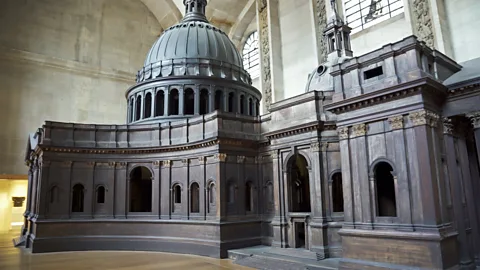 The giant 350-year-old model of St Paul's Cathedral
The giant 350-year-old model of St Paul's CathedralHiding in a London cathedral is an intricate wooden mock-up of Sir Christopher Wren's masterpiece.
5 Sep 2024History Uncovering the sunken relics of an ancient city
Uncovering the sunken relics of an ancient cityBettany Hughes goes underwater in search of ancient archaeological finds in historic Sozopol, Bulgaria.
4 Sep 2024Archaeology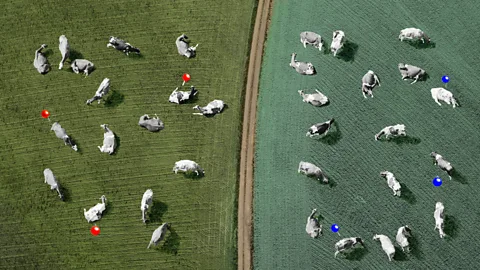 Texas fever: The lesser-known history of the US border
Texas fever: The lesser-known history of the US borderIn 1911, a fence was constructed on the US-Mexico border. But its purpose was not to stop humans.
18 Aug 2024History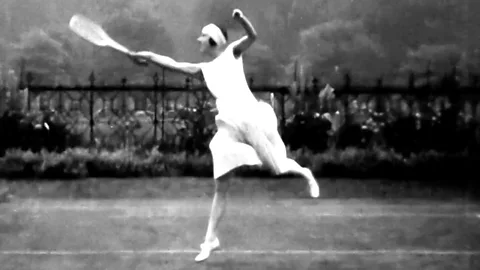 Century-old Olympics footage brought back to life
Century-old Olympics footage brought back to lifeA look through footage from the Paris 1924 Olympics gives viewers a chance to reflect on how much has changed.
9 Aug 2024Sport The rare medieval street about to reveal its secrets
The rare medieval street about to reveal its secretsOne of Europe's oldest residential streets hides in the heart of the English countryside.
23 Jul 2024History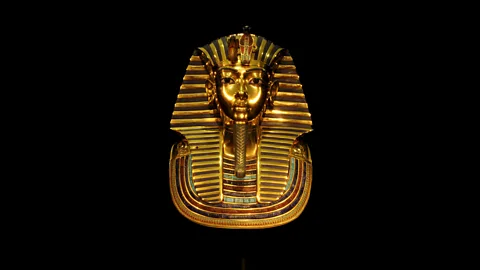 Tutankhamun: The first ever view inside the tomb
Tutankhamun: The first ever view inside the tombOne month after the famous discovery, photographer Harry Burton recreated the first view of Tutankhamun's tomb.
5 Jul 2024History Listen to the oldest known recording of a human voice
Listen to the oldest known recording of a human voiceThomas Edison wasn't the first person to record sound. It was a Frenchman who invented sound recording in 1857.
3 Jul 2024HistoryMore3 hrs ago Remains of 300-year-old sailor to be buried
Remains of 300-year-old sailor to be buriedAn archaeologist says the remains are believed to belong to a shipwrecked sailor or fisherman.
3 hrs agoScience & Environment4 hrs ago Is this the face of teenage queen Lady Jane Grey?
Is this the face of teenage queen Lady Jane Grey?"A compelling argument" can be made as it is the only one painted in her lifetime, say experts.
4 hrs agoBeds, Herts & Bucks16 hrs ago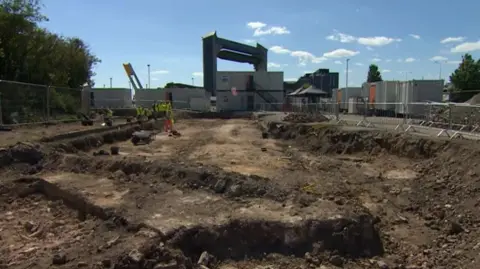 Plans approved for Henry VIII castle attraction
Plans approved for Henry VIII castle attractionThe South Blockhouse project has been given the go-ahead despite concerns over a £1m funding shortfall.
16 hrs agoHull & East Yorkshire18 hrs ago Notre-Dame finds its voice after fire muffled it
Notre-Dame finds its voice after fire muffled itPerformers and visitors to the famous gothic cathedral in the midst of the River Seine may find some subtle differences to the way sound bounces around its walls.
18 hrs agoFuture20 hrs ago Japan's spectacular island-hopping bike trail
Japan's spectacular island-hopping bike trailThe 70km Shimanami Kaido, webbed with fishing harbours, hillside citrus orchards and historic shrines, is often regarded as one of the world's most incredible bike journeys.
20 hrs agoTravelAP by OMG
Asian-Promotions.com |
Buy More, Pay Less | Anywhere in Asia
Shop Smarter on AP Today | FREE Product Samples, Latest
Discounts, Deals, Coupon Codes & Promotions | Direct Brand Updates every
second | Every Shopper’s Dream!
Asian-Promotions.com or AP lets you buy more and pay less
anywhere in Asia. Shop Smarter on AP Today. Sign-up for FREE Product Samples,
Latest Discounts, Deals, Coupon Codes & Promotions. With Direct Brand
Updates every second, AP is Every Shopper’s Dream come true! Stretch your
dollar now with AP. Start saving today!
Originally posted on: https://www.bbc.com/culture/article/20250305-tony-harrisons-v-why-a-poem-outraged-1980s-britain?ocid=global_culture_rss
